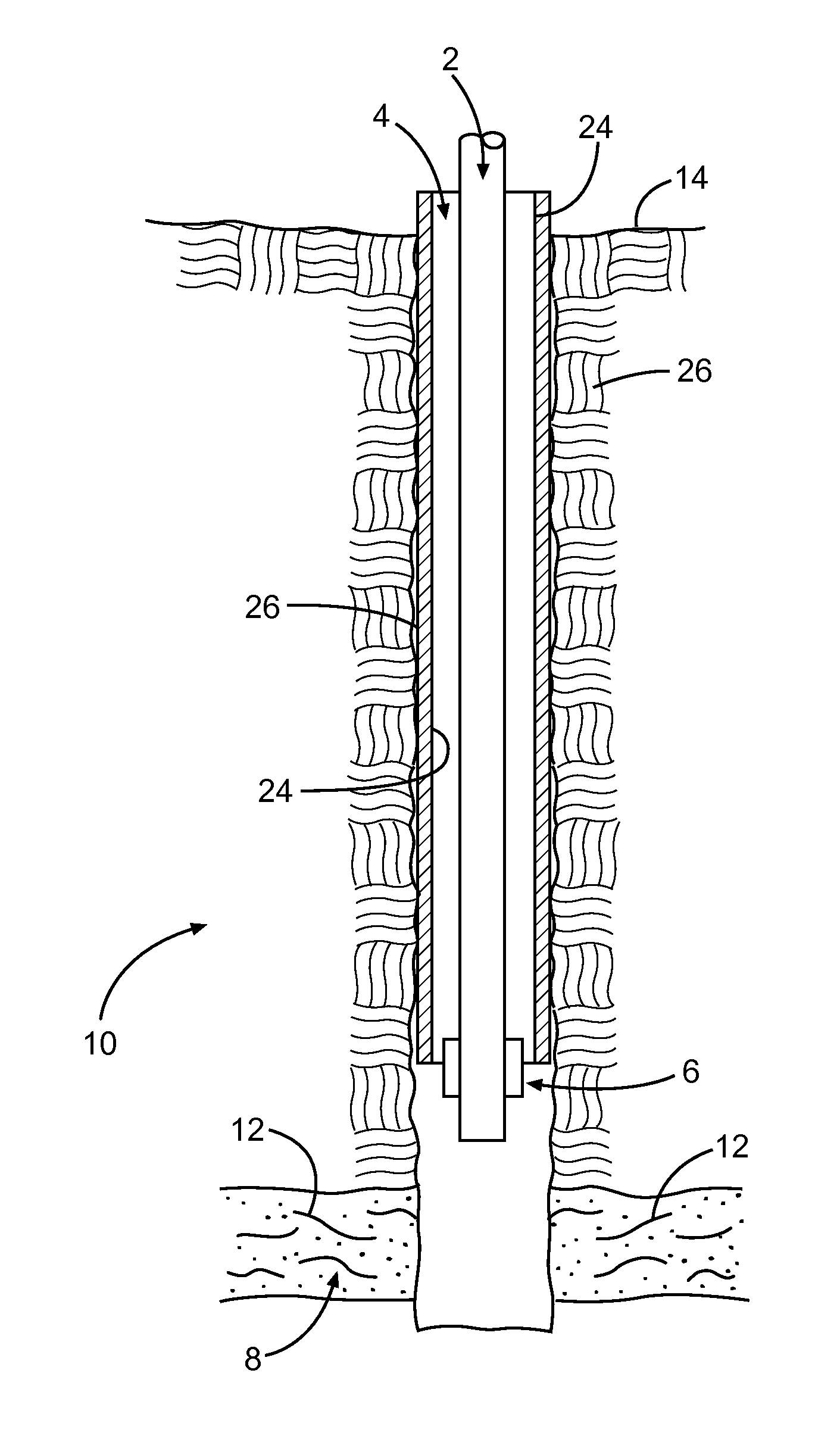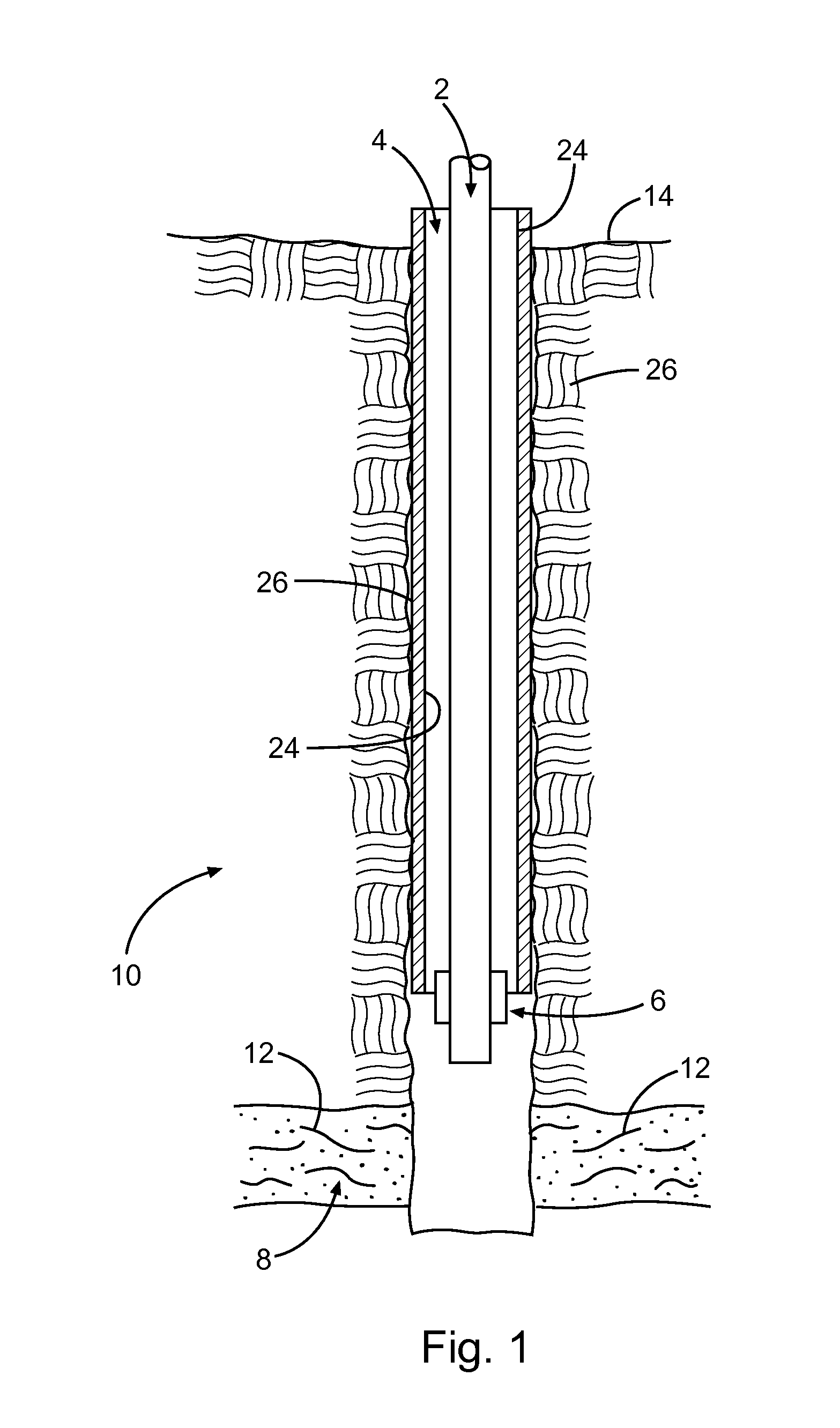Methods for treatment of a subterranean formation
a subterranean formation and treatment method technology, applied in the field of methods, can solve the problems of ineffectiveness or ineffectiveness of viscosifiers and lost circulation materials in certain high temperature downhole environments, inefficient environmental protection, and high cost of materials that are robust in high temperature environments, so as to avoid costs and environmental impact, improve the effect of cooling downhole areas, and increase costs
- Summary
- Abstract
- Description
- Claims
- Application Information
AI Technical Summary
Benefits of technology
Problems solved by technology
Method used
Image
Examples
example 1
Drilling Fluid in a High Temperature Well. (Hypothetical)
[0079]In a high temperature well having a bottomhole static temperature of about 400° F., an initial flow rate is established by pumping water through a drill string, recording the injection rate (4 barrels per minute (BPM)) and pressure. The injection rate through the drill string is reduced by half (2 BPM), and the remaining 2 BPM of water is pumped though the annulus. While pumping the water through the tubular passage and the annular passage, the water being pumped through the tubular passage is switched to a high viscosity drilling fluid. The drilling fluid maintains an acceptable viscosity downhole in the high temperature well due to the cooling effect of the water being pumped through the annulus.
example 2
Lost Circulation Material in a High Temperature Well. (Hypothetical)
[0080]In a high temperature well having a bottomhole static temperature of about 400° F., an initial flow rate is established by pumping water through a drill string, recording the injection rate (4 BPM) and pressure. The injection rate through the drill string is reduced by half (2 BPM), and the remaining 2 BPM of water is pumped though the annulus. While pumping the water through the tubular passage and the annular passage, the water being pumped through the tubular passage is switched to a chemical sealant lost circulation material. The lost circulation material functions acceptably in the high temperature well due to the cooling effect of the water being pumped through the annulus.
example 3
Brine Dilution. (Hypothetical)
[0081]In a well, an initial flow rate is established by pumping water through a drill string, recording the injection rate (4 BPM) and pressure. The injection rate through the drill string is reduced by half (2 BPM), and the remaining 2 BPM of water is pumped though the annulus. While pumping the water through the tubular passage and the annular passage, the water being pumped through the tubular passage is switched to a 20% brine. Five hundred oil barrels (bbls) of the 20% brine are pumped through the drill string, which mixes with water pumped down the annulus to generate 1000 bbls of 10% brine downhole.
[0082]The terms and expressions that have been employed are used as terms of description and not of limitation, and there is no intention in the use of such terms and expressions of excluding any equivalents of the features shown and described or portions thereof, but it is recognized that various modifications are possible within the scope of the embo...
PUM
 Login to View More
Login to View More Abstract
Description
Claims
Application Information
 Login to View More
Login to View More - R&D
- Intellectual Property
- Life Sciences
- Materials
- Tech Scout
- Unparalleled Data Quality
- Higher Quality Content
- 60% Fewer Hallucinations
Browse by: Latest US Patents, China's latest patents, Technical Efficacy Thesaurus, Application Domain, Technology Topic, Popular Technical Reports.
© 2025 PatSnap. All rights reserved.Legal|Privacy policy|Modern Slavery Act Transparency Statement|Sitemap|About US| Contact US: help@patsnap.com



